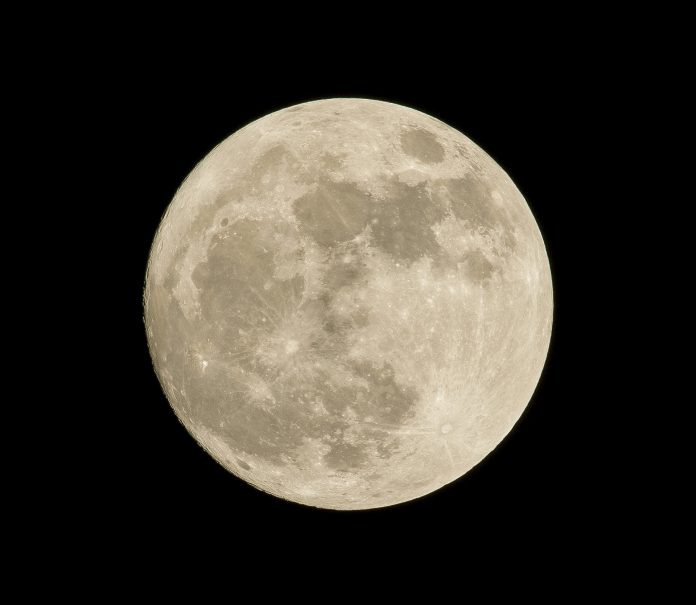Winter and the month of February bring us a full Snow Moon on Wednesday, February 16th. It may surprise you to know that the moon’s total fullness or illumination doesn’t always happen at night. What we will see in darkness may be a moon of 98% fullness. It is not really full, but it looks that way to our eyes for several nights in a row. February’s full moon, as others, is 100% for just one minute in time. This year that moment occurs at 11:59 am. February 16. That’s lunch time! Why is that? Complete fullness is recognized by the moon’s position in its orbit around the Earth. Syzygy [sizz-i-gee], a term I had never heard of! It refers to the exact alignment of three celestial bodies. It happens whether it is day or night. Syzygy occurs each month at full moon when the sun, moon, and Earth align.
It makes sense, calling it a Snow Moon. The shortest month of February usually has the heaviest snowfalls of winter. How is snowfall measured? Not something that crosses our mind here in Florida! You may think it’s pretty easy to just stick a ruler in the snow and check. The nightly news is always telling us how many inches of snow will be predicted for those northern cities. Actually there are guidelines in place for measuring snow. They are followed by some 8,700 weather observers around the United States.
Most observers are volunteers that have learned to measure snow on flat, level surfaces. They pick a location in their area with little or no chance of snow drift. New snow is measured. Snow depth is measured. Ideally they use a snowboard which is a square white board that absorbs little or no sunlight. The board is put on the ground first. It reaches the same temperature as the outside air and provides an even surface for measurement. During 24 hour time periods the weather volunteers take snow readings one to four times. They wipe off the board and measure. They round up and average. They add data to earlier readings. It’s a whole process I never imagined. Consistency over time is important. Accuracy is important. What about sleet, ice, or compacted snow? You wait and come back. It’s not easy!
Most weather observers also record daily high and low temperatures and precipitation. They have been sending data to the United States National Weather Service since the 1890’s. The Weather Service was created under President Benjamin Harrison to coordinate data. The invention of the telegraph in the mid-1800’s made sharing data possible around the United States!
Native Americans also named February’s moon after animals they observed. They mentioned groundhogs for February as well as raccoons and geese. They spoke of bears and eagles. Winter was the time of year for bear cubs to be born. February was a month when food was hard to come by. Remember that the Native Americans had to hunt and provide for their families? To them the moon earned names like Bony Moon or Hungry Moon.
This month there is also something to see if you get outside very early. In the darkness, the planet Venus will appear as a bright morning star on the eastern horizon. It sparkles before the sun is up. It’s there already! February 27th we’ll be treated to a view of two planets, Venus and Mars. You will see a waning crescent moon come up beside them. At an hour before sunrise you should be able to see all three.
Soon March will be here and then spring. It won’t be long now. Thoughts of winter and snow will fade away but not before we get to see a beautiful Snow Moon!

